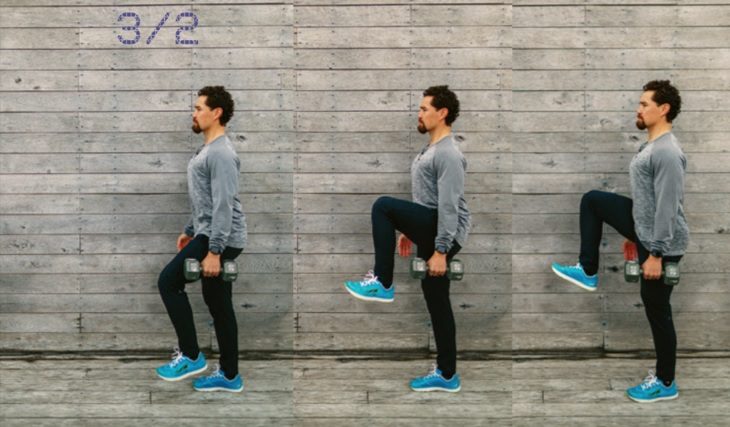Runners: how to strength train without injuring yourself
We consulted a physical therapist and conditioning specialist to learn more

We all know strength training is important for runners, but how do we include it in our training programs without hurting ourselves? Minneapolis-based physical therapist Tom Broback gives us the basics on how runners can strength train safely so that it helps, rather than hinders, your performance.
One of the primary ways to ensure you’re strength train effectively while minimizing the risk of injury is to follow a program tailored to your specific strengths and weaknesses. The best way to do this is to consult an expert, such as a physiotherapist, a strength and conditioning coach or a personal trainer who’s experienced in working with runners.

What should runners focus on when strength training?
Broback adds that your program should include basic movement patterns, including squats, deadlifts and lunges, and focus on the aspects of human performance that running doesn’t capture (think plyometrics and med ball throws for power, for example). “Most training programs for runners consist of two to three days per week in the gym, with an average of three sets of six exercises to help them improve their strength and power,” he says.
Why do some runners hurt themselves while strength training, even when they use good form?
This is a difficult question to answer because, as Broback says, injuries can be caused by a number of factors. “Strength, injury history, diet, stress management and mechanics are just a few of the many things that go into why athletes get hurt,” says Broback. “The best mechanics in the world will help you run faster and stay healthy, but they don’t guarantee you will never get hurt.”

How do you safely strength train when you have an injury?
If you’re already dealing with an injury in a joint or muscle, strengthening muscles around the injured area can help it get better, but how do you do so safely? Broback suggests decreasing the load as one way to ease discomfort. You can also change the number of repetitions or sets that you are doing, or limit the range of motion to something that doesn’t cause pain. “A practical example of this is going halfway down in a split squat versus all the way down,” he says. “An extreme limit of motion would be an isometric, where you are holding a specific position for a period of time. I love isometrics for joint pain, because they allow you to load the muscles around the joint without irritating it.” (Isometric exercises are those that involve contracting a muscle or muscles without moving the joint, such as a wall-sit, or holding a plank.)

If you are really having a hard time figuring out how to train when you have nagging aches or pains, or your discomfort isn’t going away or is getting worse, Broback suggests seeing a rehab professional. He or she will be able to assess what’s causing your pain and will design a program that is tailored to your abilities and needs, so you can eliminate your discomfort and train to your fullest potential.
Should older runners or runners with a history of injury be approaching strength training differently?
According to Broback, older runners and runners with a history of injuries fall into the same boat: they need to spend more time on their bodies to keep running. Some runners need to spend more time warming up, some need extra modalities on their recovery days. Most runners, he says, need to spend more time getting stronger with foundational movements like squats, lunges and deadlifts. “Figuring this out will not only improve your running, but make you an overall stronger, healthier and happier human being,” he says.


